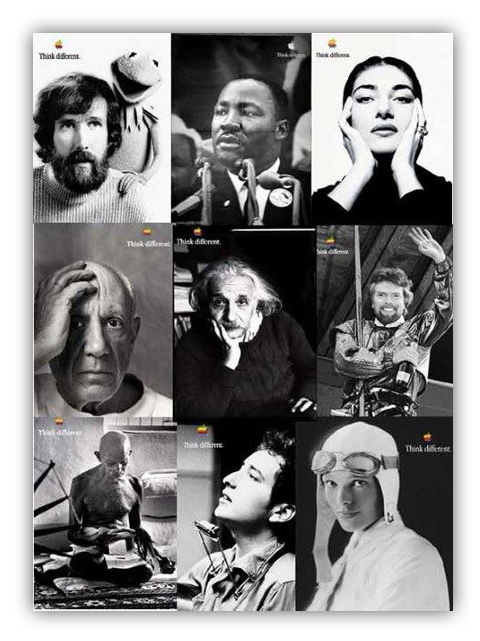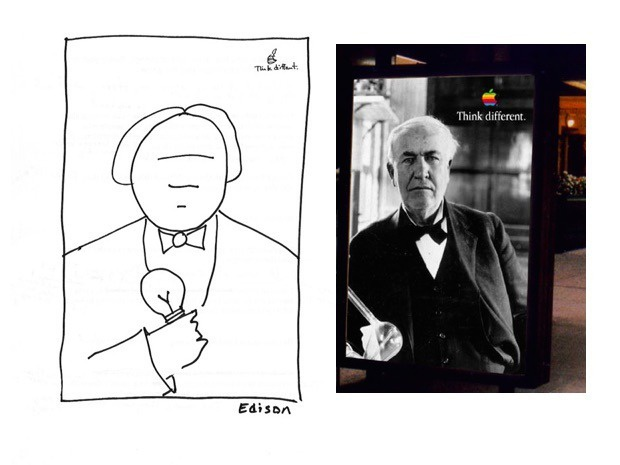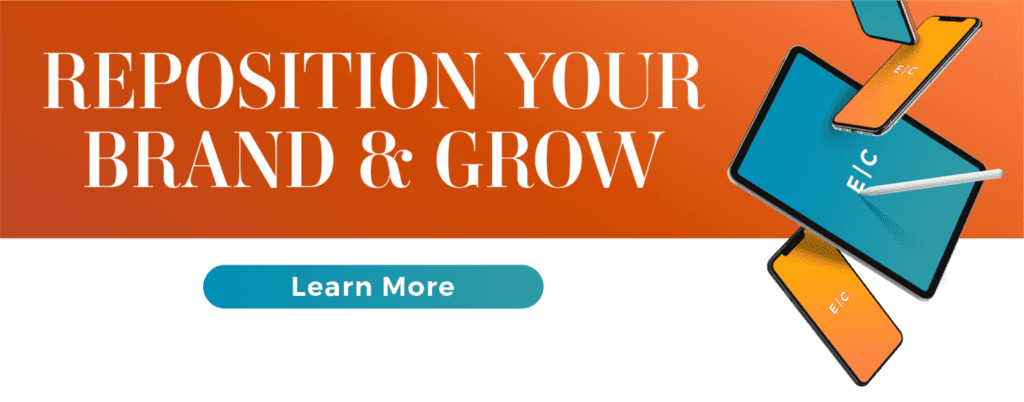Iconic Ads: Apple – Think Different

In 1997 Steve Jobs had come back to Apple as interim CEO. And he was looking at changes. And in advertising too.
Before being sacked by John Sculley at Apple, Chiat/Day was the agency and had created some great advertising. Lee Clow, the creative director, felt that Chiat/ Day did not deserve to lose the Apple business in the first place.
Chiat Day was on a roll. They had been named agency of the year.
The First Meeting
Lee Clow and Rob Siltanen decided to visit Steve Jobs. Even though it was ten years since Lee and Jobs were meeting, there were few warm greetings from Jobs.
Jobs was straightforward and said things were bad. He invited Chiat/Day to pitch for the account.
Jobs wanted some print ads and no TV. But Rob disagreed. He told him, “Half the world thinks Apple is going to die. A few print ads in the computer magazines aren’t going to do anything for you. You need to show the world that Apple is as strong as a lion. Nobody stands around the water cooler talking about print ads. You need to do something bigger and bolder. You need to do TV and other things that are going to give you true momentum.” He also said that any agency could talk, but the execution would define it.
Lee and Rob had come with the intention of not pitching. But, after hearing Jobs talk, Lee decided to do so.
The Idea Generation
The creative team had used Apple before. They all loved Apple. There was no brief as such.
Apple had fans in creative businesses like Hollywood, music etc. Chiat/ Day thought perhaps the best way to get testimonials from famous fans like Steven Spielberg and Sting. On the flip side, there was a lot of negative news with people calling Apple computers “toys” – not real computers, dumb purchases, shrinking market share, and so on. All in all, it was a terrible situation.
Craig Tanimoto was a member of the creative team of Chiat/Day. He was experimenting with numerous concepts. One of them was a poem on conformists written in the style of Dr Seuss. Sneetches and morals were on his mind. He wrote on being independent, standing firm and being a rebel.
Then he wrote – Think different. He then drew the Apple logo with the words beneath it.
On the opposite side of the book, he had drawn a little picture of Thomas Edison with a radiating light bulb over his head, but instead of the bulb, he placed an Apple logo. And voila – the idea was born!
Thomas Edison with the words “Think Different”. The inventor whose ideas changed the world.

Next, he wanted to know if he could do more. He used Einstein, Gandhi and so on. The possibilities became endless. The idea moved beyond the realm of computers.
He ruminated about how he would show it to Lee at the presentation.
The Internal Presentation
Lee Clow was walking along the walls of the conference room adorned with all the creatives. He was evaluating them. When he came up to Tanimoto’s campaign, he stopped and said. “Shouldn’t it be ‘Think Differently’?”
Tanimoto said no.
Clow thought about it for a minute and agreed. He turned to the group and announced, “Everyone’s working on this. I want to blow this execution out.”
IBM had come out with “Think IBM” for ThinkPad. Craig felt that Apple was different so “Think Different” would be appealing,” He also thought it would be fun to associate those terms with some of the world’s most unconventional thinkers.
The rainbow-coloured logo stood out against the black-and-white imagery, and Craig thought it added to the boldness of the “Think Different” slogan. Apple urgently needed this type of attention-getting, thought-provoking advertising.
Rob worked with Clow to illustrate how genuine visionaries have always gone against the grain and thought differently, and that Apple develops tools for individuals like them.
There are people who see the world differently.
They see things in new ways.
They invent, create, imagine.
We make tools for these kinds of people.
Because while some might see them as the crazy ones,
We see genius.
Think different.
The video was also about two minutes long. Even though they tried to edit it further, they could not, as the lyrics wouldn’t work. Moreover, Rob thought he could write an impactful commercial later if Jobs liked the idea.
The Pitch
Lee Clow led the pitch. Jobs was quiet during the pitch, but he seemed intrigued throughout, and now it was time for him to talk. He looked around the room filled with the “Think Different” billboards and said, “This is great, this is really great … but I can’t do this. People already think I’m an egotist, and putting the Apple logo up there with all these geniuses will get me skewered by the press.” The room was silent.
Steve came to a halt, glanced around, and said aloud as if to himself, “What am I doing?” Screw it. It’s the right thing. It’s great. Let’s talk tomorrow.” A 180-degree turn.
After the Pitch
Jobs wanted the Seal song but no matter how much they tried, they could not edit it to 60 seconds. They told Steve the mood piece was never intended to be a spot. He was unhappy.
Rob told Steve he would write a lyrics based on the movie Dead Poets Society. The movie had a profound effect on Rob. The ethos and emotion of the movie was to be extracted for Apple.
Jobs had seen the movie and Rob said he would get back in a week.
Rob went back, wrote and rewrite umpteen times and finally –
“To the crazy ones. Here’s to the misfits. The rebels. The troublemakers. The people who see the world differently.”
…“The people who are crazy enough to believe they can change the world are the ones who actually do.”
Many of the famous people like King, Ted Turner, Gandhi, Einstein had been told they are crazy, trouble makers and ridiculed. They had struggled. Just like Apple, being different is a good thing.
Rob believed the last line was delightfully succinct and beautifully poetic. It was his favourite part of the copy. He wrote some versions and Lee liked them too and so did others in the office.
Presentation to Jobs
They presented it to Jobs at Cupertino.
They played the spot once, and when it finished, Jobs said, “It sucks! I hate it! It’s advertising agency shit! I thought you were going to write something like ‘Dead Poets Society!’ This is crap!”
And Steve continued to go on a rant about how we should get the writers from “Dead Poets Society” or some “real writers” to write something.
Rob was angry and disappointed and told Lee Clow that he did not want to work on Apple.
Meanwhile, Lee asked various copywriters within & outside the to work on the lines. One of them was Ken Segall, who had recently joined after Chiat/ Day won the Apple business. Ken had worked with Jobs in the past. One day, Ken came to Rob’s office and said, “Jobs has seen a ton of scripts, and he’s gone full circle …we’re moving ahead with your ‘Crazy Ones’ script. I made some tweaks. I hope you don’t mind.”
Ken had some great touches on the script. He also wrote the long copy version for the press. But he did not stray away from the core which Rob had written.
For the voice over, Rob wanted Robin Williams, (who refused as he did not do advertising), Tom Hanks or Richard Dreyfuss. Clow wanted Jobs. They finally settled for Dreyfuss, who gave the “Crazy Ones” a slow and tenacious feel that made each syllable more significant.
The geniuses used were – Albert Einstein, Bob Dylan, Martin Luther King, Jr., Richard Branson, John Lennon (with Yoko Ono), Buckminster Fuller, Thomas Edison, Muhammad Ali, Ted Turner, Maria Callas, Mahatma Gandhi, Amelia Earhart, Alfred Hitchcock, Martha Graham, Jim Henson (with Kermit the Frog), Frank Lloyd Wright and Pablo Picasso
Launch Aftermath
Apple became talked about. And there was good and bad. A writer for the Los Angeles Times ripped the campaign, saying, “Perfectly, Apple is doing a campaign with a bunch of dead guys because the brand will be dead soon, too.”
But it got the fans charged up, and gave a whole new impression of Apple.
Within 12 months, Apple’s stock price tripled. A year after the “Think Different” launch, Apple introduced their multi-coloured iMacs.
For more reading
a) https://medium.com/ad-discovery-and-creativity-lab/think-different-b566c2e6117f
b) https://www.forbes.com/sites/patrickhanlon/2015/12/06/meet-the-man-who-saved-apple/?sh=7acb65e93112




Great thought provoking ad, excellent write up. Thanks
Thanks a lot Sunil. Great Advertising..this.
Highly appreciate your narration style! Loved it.
Thanks a lot. The ads give me scope to narrate this way. Also, information is available.